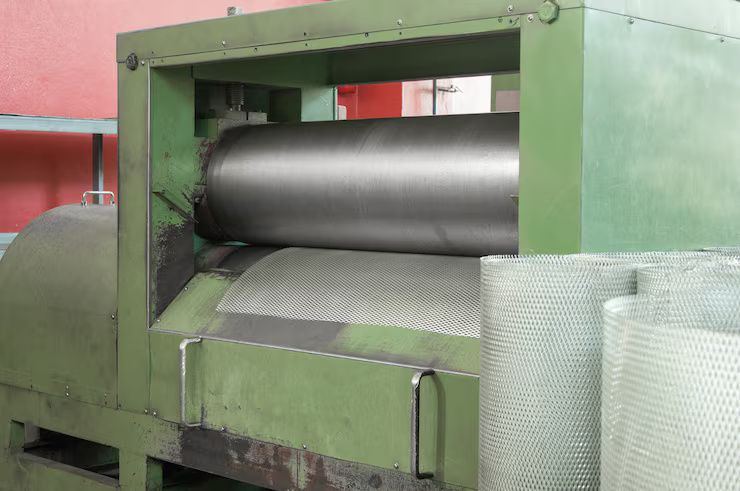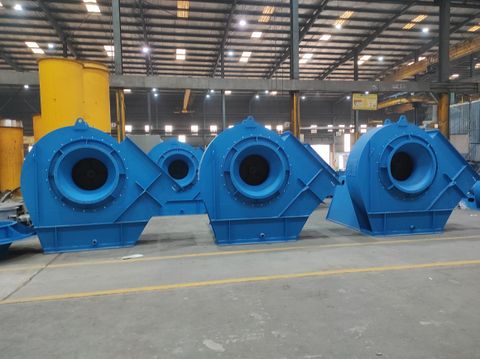A Helpful Overview of Roll Press Machine Types and Features
Roll press machines are industrial tools used to apply pressure between two or more rotating rolls to shape, compress, or process materials. They are widely used in industries such as metalworking, textiles, plastics, packaging, battery manufacturing, and paper production.
The concept exists because many materials need controlled pressure to achieve uniform thickness, increased density, structural strength, or a smooth surface finish. Machines built with pressurized rollers make these processes faster, more consistent, and suitable for high-volume industrial operations.

Roll presses are designed to perform tasks such as:
-
Compression and densification of powders and composite materials
-
Lamination of films, textiles, and sheets
-
Calendering to refine surfaces and thicknesses
-
Forming and shaping metals, plastics, and rubber
-
Continuous production of sheets, rolls, and layered materials
These machines play a crucial role in modern manufacturing due to their precision, speed, and ability to handle diverse materials.
Importance – Why Roll Press Machines Matter Today
Roll press machines are becoming more essential as industries demand improved material quality, better energy efficiency, and higher production throughput. Their importance spans several sectors:
1. Growth in Manufacturing and Material Engineering
Industries producing lithium-ion batteries, laminated films, packaging materials, and metal sheets rely on roll presses for consistent results. Precision rolling ensures higher quality and reduced wastage.
2. Increased Need for Uniform Surfaces and Thickness
Sectors such as automotive, electronics, and construction require materials that meet strict dimensional standards. Roll presses make it possible to maintain:
-
Uniform thickness
-
Smooth textures
-
Consistent surface finish
3. Support for Sustainable Production
Modern roll press machines help reduce waste and material losses. Controlled compression and lamination support sustainability goals by enhancing efficiency.
4. Relevance Across Industries
Roll presses affect many professionals:
-
Manufacturers need reliable machines for mass production
-
Engineers require precise pressure control for product design
-
Small industries use smaller models for laminating, textile finishing, and packaging
-
Researchers use laboratory roll presses for material testing
5. Problem-Solving Capabilities
Roll press machines address several industrial challenges:
-
Irregular material thickness
-
Low structural density
-
Manual processing errors
-
High production cost due to wastage
-
Need for high-volume processing
Their ability to deliver consistent performance makes them vital in global production networks.
Recent Updates – Trends and Developments
Several advancements in roll press technology have emerged recently. Notable updates from 2024–2025 include:
1. Automation and Digital Control (Early 2024)
Manufacturers have introduced roll presses equipped with:
-
Smart sensors
-
Automatic pressure adjustment
-
Digital thickness measurement
-
IoT-based monitoring
These updates help reduce downtime and improve accuracy.
2. Growth in Battery Manufacturing Roll Press Use (Mid-2024)
With the expansion of EV and renewable energy sectors, roll presses for cathode and anode production have become more widespread. Calendar roll presses now include thermal control and precision pressure mapping.
3. Energy-Efficient Rollers (Late 2024)
New designs focus on low-energy motors, optimized roller diameter, and improved bearings to lower energy consumption.
4. Safety Enhancements (2024–2025)
Recent updates include:
-
Improved safety guards
-
Better emergency stop systems
-
Advanced sensor-based roller spacing control
5. Modular Roll Press Designs (2025)
Manufacturers are offering customizable machines that allow industries to add or remove features such as temperature control, hydraulic units, and surface finishing rollers.
Laws or Policies – Regulations Affecting Roll Press Usage
Roll press machines are influenced by safety, industrial, and environmental regulations depending on the country. Below is a general overview relevant to many regions:
1. Industrial Safety Standards
Regulatory bodies require:
-
Proper machine guarding
-
Emergency stop mechanisms
-
Safe access points
-
Periodic safety inspections
In countries like India, standards may relate to BIS industrial safety guidelines, while in the U.S., OSHA standards apply.
2. Energy Efficiency Policies
Governments encourage use of energy-efficient motors under:
-
National energy conservation programs
-
Manufacturing modernization incentives
3. Environmental Compliance
Regulations may apply to:
-
Waste disposal
-
Emissions from heating components
-
Noise control
-
Chemical handling for laminated or coated materials
4. Import and Machinery Certification
Imported roll press machines often must meet:
-
CE certification (Europe)
-
ISO manufacturing standards
-
Country-specific machinery compliance rules
5. Worker Training Requirements
Many regions mandate worker training programs before operating heavy machinery, including roll press systems.
Tools and Resources – Helpful Platforms and Guides
Here are useful tools, websites, and resources related to roll press machines:
Technical Tools
-
Thickness Gauges – for measuring sheet thickness
-
Pressure Calculators – for determining compression requirements
-
Roller Alignment Tools – ensure uniform roller spacing
-
Digital Load Meters – measure rolling pressure
Online Platforms and Websites
-
Engineering Toolbox – material pressure and calculation references
-
Material Science Online Databases – for sheet properties
-
Industrial Equipment Forums – troubleshooting communities
-
Government Industrial Safety Portals – compliance guidelines
Learning Resources
-
Online courses in mechanical manufacturing
-
Video tutorials on roll press setup
-
Material processing handbooks
Templates and Checklists
-
Maintenance checklists
-
Safety inspection templates
-
Pressure and temperature control logs
-
Production tracking sheets
Table: Common Types of Roll Press Machines and Their Uses
| Roll Press Type | Main Use | Industries |
|---|---|---|
| Hydraulic Roll Press | High-pressure compression | Battery, metal, composites |
| Calender Roll Press | Surface finishing, thickness control | Paper, textiles, rubber |
| Laminating Roll Press | Bonding layers | Packaging, electronics |
| Hot Roll Press | Heat-assisted shaping | Plastics, composites |
| Cold Roll Press | Metal shaping without heat | Automotive, construction |
| Laboratory Roll Press | Testing and small batch work | R&D, material labs |
FAQs – Clear and Helpful Answers
1. What is a roll press machine used for?
A roll press machine is used to compress, shape, laminate, or refine materials by applying pressure through rollers. It ensures uniform thickness, improved density, and consistent surface quality.
2. Which industries commonly use roll press machines?
They are used in metalworking, battery manufacturing, textiles, packaging, plastics, rubber, and paper production.
3. How do I choose the right roll press machine?
Selection depends on the material type, required pressure, temperature needs, width of production, and desired surface finish. Consider safety features and energy efficiency as well.
4. Are roll press machines safe to operate?
Yes, when operated under proper safety guidelines. Machines must include guards, emergency stop systems, and regular maintenance checks.
5. What is the difference between hot and cold roll press machines?
Hot roll presses use heat to soften materials for easier shaping, while cold roll presses rely solely on mechanical pressure for forming and densifying materials.
Final Thoughts
Roll press machines are essential tools across many manufacturing industries due to their ability to deliver consistent, high-quality material processing. From metals to films and battery electrodes, they support high productivity, precision, and uniformity. With advancements in automation, safety, and efficiency, modern roll presses continue to evolve. Understanding their types, features, regulations, and industry uses helps businesses make informed decisions and maintain safe, efficient operations.







